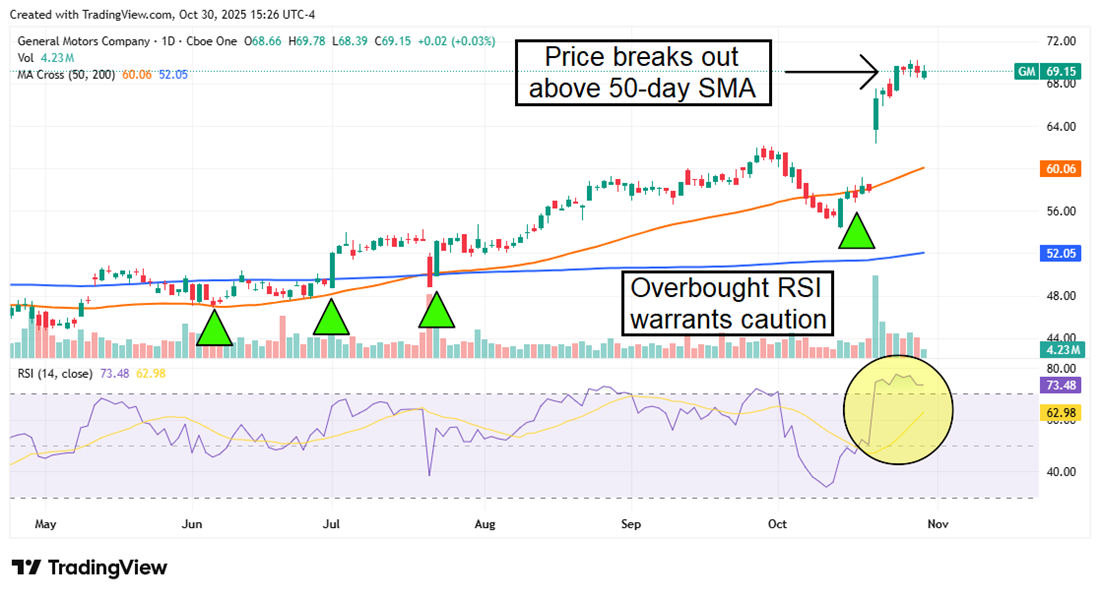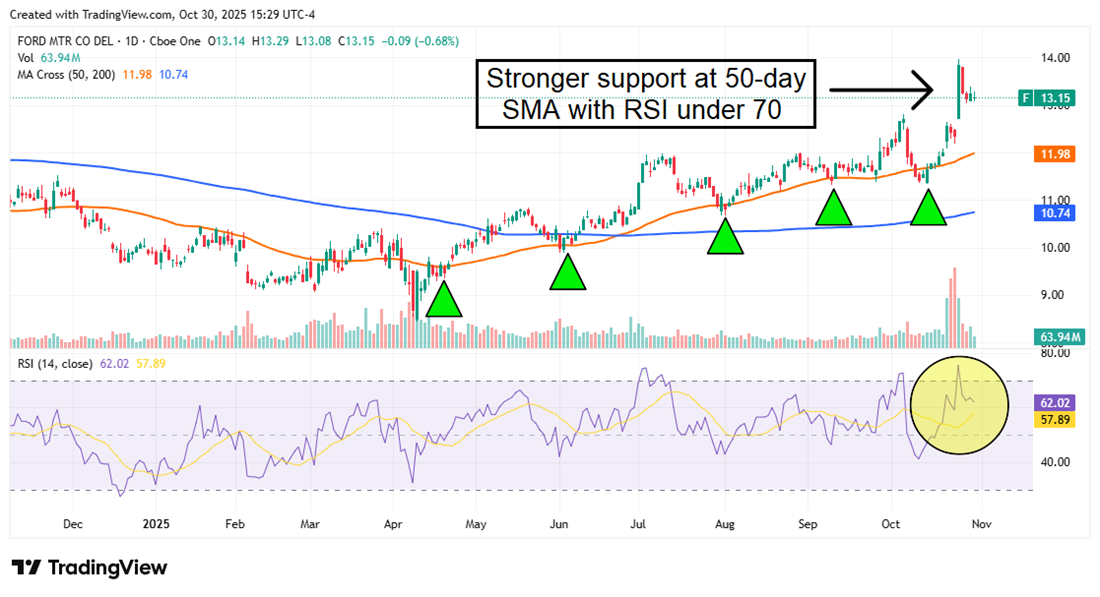Ticker Reports for November 3rd
$134M in Insider Moves: What It Might Mean for KMI, ISRG and QS
Insider buying and selling are key indicators for investors to assess the trajectory of different stocks.
Insider buying is often considered a bullish signal because those who know the company the best are loading up on shares. It suggests that positive developments are on the horizon—which could lead to a rally—or that the insider sees long-term value in a stock.
Meanwhile, insider selling is often considered bearish because individuals are looking to reduce exposure to their own firms.
However, not all insider buys and sells are equally relevant. Here’s what recent insider activity at three high-profile companies—Kinder Morgan (NYSE: KMI), Intuitive Surgical (NASDAQ: ISRG), and QuantumScape (NYSE: QS)—reveals about where these stocks could be headed.
Kinder Morgan: Co-Founder Executes $26 Million Buy
First up is natural gas giant, Kinder Morgan. On Oct. 27, the company saw an insider purchase worth just under $26 million. This is the first insider buy that MarketBeat has tracked for Kinder Morgan this year, excluding a handful of congressional purchases.
Notably, the $26 million purchase was from Kinder Morgan’s co-founder, Richard D. Kinder.
Despite stepping down from his role as Kinder Morgan's CEO in 2015, Kinder still holds the position of Executive Chairman. The person in this role typically leads a company’s Board of Directors and helps develop its long-term strategy, which means that Kinder likely still has deep knowledge of KMI’s operations.
Kinder Morgan shares haven’t done much in 2025, providing a total return of negative 1%. This lack of performance may indicate that Kinder sees a long-term opportunity in the company's shares.
His buy is equal to around 3x the $8.7 million in insider sales tracked at Kinder Morgan throughout 2025, appearing to be a moderately bullish indicator.
Intuitive Surgical: Insiders $36 Million Sell a Warning Sign?
Next up is one of the world’s highest-quality healthcare stocks, Intuitive Surgical. The company has come to dominate the robotics-assisted surgery market, with shares increasing by more than 800% over the last decade. With a market cap of approximately $189 billion, Intuitive Surgical is one of the world’s 15 most valuable healthcare stocks.
From Oct. 24 to Oct. 29, ISRG saw around $36 million worth of insider selling. This comes at a somewhat interesting juncture, a shares spiked by 13.9% on Oct. 22 and by another 4.6% on Oct. 23 following a very impressive Q3 earnings report.
The sales that follow raise questions about whether these individuals are looking to get out of the stock after its significant gain.
But here’s the catch: these trades were all executed under 10b5-1 plans—prearranged trading schedules that are designed to prevent insiders from acting on nonpublic information. Thus, generally speaking, 105b-1 plan trades are considered neutral, rather than bearish, signals. Columbia Law School researchers actually found early evidence that stocks with 105b-1 trades often see “flat or slightly positive abnormal returns” afterward.
QuantumScape: Discretionary Insider Selling Follows Massive Stock Surge
Last up is QuantumScape, which has seen its shares explode by more than 350% since the beginning of June.
The company is developing next-generation batteries for electric vehicles (EVs), which have the potential to be much longer-lasting than current EV batteries, addressing a key choke point for prospective buyers.
However, the firm still has no revenue and has a market cap north of $11 billion. That is why it’s not so surprising to see over $72 million of insider sales since the end of July, with more than half of those sales occurring in October.
Notably, the vast majority of these October sales were discretionary, or not made under a 105b-1 plan. This clearly positions QuantumScape’s recent insider selling as a bearish indicator.
Adding weight to this idea is the fact that MarketBeat hasn't tracked any insider buying at QuantumScape in October. Recent insider selling combined with QuantumScape’s rapid appreciation suggests that insiders have limited confidence in the company's near-term valuation.
Insider Trades Reveal Diverging Stock Outlooks
Insiders at Kinder Morgan, Intuitive Surgical, and QuantumScape are providing investors with a broad spectrum of signals. Kinder’s $26 million buy implies long-term value and insider confidence. Intuitive Surgical’s insider sales look routine and don’t suggest concern. QuantumScape’s giant uptick in discretionary sales is particularly noteworthy, potentially signaling that insiders believe the stock has outpaced fundamentals.
Once-in-a-generation financial crisis is coming
Once-in-a-generation financial crisis is coming
3 Stocks Flashing Buy Signals With $8.5 Billion in Buybacks
Buybacks often serve as a vote of confidence from a company's management, especially when share price has lagged behind expectations.
After experiencing share price weakness, three notable companies have announced major stock buyback programs, indicating that they believe the current weakness is not a risk, but rather an opportunity to create long-term shareholder value.
MSCI CEO Sends a Clear Message: This Stock Is Undervalued
First up is one of the biggest names in global investing, MSCI (NYSE: MSCI).
Like S&P Global (NYSE: SPGI), MSCI maintains some of the world’s most important market indexes. MSCI's indexes benchmark over $18.3 trillion in assets, which, compared to the $20 trillion in assets benchmarked or indexed to the S&P 500 Index at the end of 2024, illustrates the company's significance.
However, MSCI shares haven’t performed well so far in 2025, delivering a year-to-date loss of 1%. In accordance, the company recently authorized a $3 billion share buyback program, equivalent to around 6.8% of the company’s market capitalization.
On its recent earnings call, MSCI CEO Henry Fernandez said, “We love MSCI, and we love it even more when it's an undervalued franchise." He emphasized that undervaluation has increased over the last couple of years, and the company aims to capitalize aggressively on this opportunity.
While buybacks are often implicit signals that a company values its shares, it is somewhat unusual for management to state this so plainly. This, combined with MSCI’s reputation in investment management, creates significant intrigue around the stock.
Zebra Technologies: Plans to Double Buyback Spending
Next up is Zebra Technologies (NASDAQ: ZBRA). This $13.6 billion tech stock is a world leader in Automatic Identification and Data Capture (AIDC) technology, including barcode scanners and mobile computers designed for inventory management.
Zebra shares are down around 30% in 2025, and it does not seem like a coincidence that Zebra just announced a $500 million buyback program, equal to 3.7% of its market capitalization.
Additionally, the firm says that it plans to use this capacity over the next 12 months, which would be more than double the company’s average 12-month buyback spending over the past five years.It also exceeds the $315 million spent over the past 12 months, reinforcing that this isn’t just about capital return; it’s a strategic signal.
Although the firm did not explicitly call its stock undervalued, the scale of the buyback authorization sends a strong message that the company is looking to capitalize on current price weakness.
Carrier Global: Bets on Data Center Growth With a $5 Billion Buyback
Last up is Carrier Global (NYSE: CARR). Carrier is a major supplier of heating, ventilation, air conditioning, and refrigeration (HVAC/R) products, with a valuation of $50.1 billion. Over the past 52 weeks, the stock has provided a total return of negative 18%, and that figure sits at down 12% in 2025.
This comes as much of its business centers around residential HVAC, which is in a downturn. Residential sales in its Climate Solutions America segment were down 30% last quarter. However, data center demand has been a big bright spot, with sales up 250% last quarter.
Given this, there could be an interesting opportunity in this stock should residential sales recover.
Notably, Carrier just authorized a $5 billion share buyback program, equal to a whopping 10% of its market cap. The firm expects its new authorization to last into 2028, bringing the total annual buyback spending to approximately $1.7 billion.
Although that number is a decrease from the $3 billion it anticipates spending on buybacks in 2025, the fact that the company plans to continue buying back stock at a strong pace indicates that it sees value in its shares.
Buybacks Send a Unified Signal: Value Opportunity Ahead
Overall, these three names are signaling that the market may be undervaluing their shares. While buyback authorizations are just one of many indicators investors should pay attention to, these signals make MSCI, ZBRA, and CARR stocks worth watching.
Nvidia Gained 156,000%…
Nvidia Gained 156,000%…
Ford and GM Stocks Jump—Is the Auto Rebound Real?
For U.S. automakers, 2025 has been a year of constant whipsawing around various patches of adversity. A confluence of factors has left consumers wary of large purchases, and many are holding on to their cars for longer and longer.
However, Q3 earnings from two of the most significant legacy American manufacturers have raised optimism about the sector's outlook. Can U.S. automakers expand on this rebound, or is it just a brief bright spot in an industry still facing strong headwinds?
Headwinds Plagued Car Manufacturers in First Half of 2025
The auto industry spent the early part of 2025 in the crosshairs of regulators and consumers alike. The uncertainty reached its pinnacle when Ford Motor Co. (NYSE: F) announced a suspension of full-year 2025 guidance during the company’s Q1 2025 earnings release. Some of the biggest factors negatively affecting car manufacturers included:
- Tariffs - The biggest elephant in the room was the Trump administration’s tariffs on cars made outside the United States. Legacy automakers like Ford and General Motors Co. (NYSE: GM) have intricate supply chains throughout North America, and tariffs on imported parts from Canada and Mexico posed a massive threat to company margins. (Ford estimated its tariff burden to be over $2.5 billion gross during its Q1 2025 earnings release.)
- High Rates - Interest rates remain elevated, and the average rate on a five-year new car loan is still above 7.5%. This rate is down nearly 100 basis points from a year ago, but is still roughly double what car buyers would have gotten on average in 2022.
- Weak Consumer Sentiment - Consumer sentiment reached multi-year lows in the spring of 2025, with many citing tariffs and high interest rates as reasons to delay spending. It has improved somewhat since early 2025, but consumers remain mostly pessimistic about the economy as the year draws to a close.
The end of the electric vehicle tax credit and shortages of various precious metals have also weighed on the car industry, and the average price of a new vehicle exceeded $50,000 for the first time in September.
But despite these pessimism-inspiring factors, Q3 earnings from both GM and Ford surpassed analyst expectations, and the return of sales growth (plus mild valuations) is putting these stocks back on investors’ radar.
GM and Ford Posted Solid Q3 Beats, But Varied Guidance
Both GM and Ford posted outstanding Q3 earnings that soared above expectations, but the conference calls offered additional color on somewhat differing outlooks for the two automotive giants.
GM’s Optimistic Guidance Raise
GM released Q3 2025 results on Oct. 21, and it's not hard to see why the stock rallied double-digits afterward.
Despite a slight year-over-year (YOY) sales decline, the company blew past expectations on both earnings per share (EPS) and revenue, and raised full-year earnings guidance to a range of $9.75 to $10.50 per share.
Executives also anticipate that tariff mitigation strategies and offsets will help reduce their 2026 burden below what they paid in 2025, despite Q1 2025 tariff rates being drastically lower.
Their improved outlook highlights growing investor confidence in the company’s operational and strategic trajectory.
Ford’s Cautious Approach
Ford also posted an EPS and revenue beat during its Q3 2025 earnings presentation on Oct. 23, but executives had a more sour outlook than their peers at GM. Tariff mitigation was a source of strength in the report, and the company now expects its burden to be about $1 billion, approximately half of what it anticipated a few quarters ago.
But Ford is facing more than tariff headwinds—the company will need to eat a free cash flow charge of up to $3 billion for the Novelis aluminum plant fire, and its first-generation EV Model is now on pace to lose $3.6 billion in 2025.
These headwinds prompted management to lower earnings before interest and taxes guidance to $6-$6.5 billion, down from $8 billion.
Both companies have reduced focus on their EV divisions now that the federal tax credit has expired, instead pivoting to hybrid models and tried-and-true trucks and SUVs.
But despite improved earnings, the car industry isn’t in the clear just yet.
Analysis from SP Global predicts a moderate slowdown in car buying in Q4, as the EV tax credit expiration boosted Q3 sales and high prices and rates will continue to burden prospective buyers.
Charts Show Bullish Long-Term Price Action With Potential Short-Term Volatility
GM and Ford both appear to have strong upward momentum on the long-term trend, but the earnings beats generated outsized gains that may have pushed shares higher than they could sustain.
GM gained nearly 15% following its earnings release, pushing the stock to a new all-time high. But the Relative Strength Index (RSI) has been trading above 70 for the longest stretch in over a year, hinting that a short-term pullback might be the next move.

Ford shares show similar movement, with strong support along the 50-day simple moving average (SMA) and a breakout following Q3 earnings. Like GM, a pullback to support wouldn’t be surprising, but Ford didn’t get the same post-earnings boost, and the RSI no longer reads Overbought.

Ford is cheaper from a valuation standpoint, pays a heftier dividend, and its chart shows more short-term potential. However, GM may prove to be the better long-term play thanks to fewer financial headwinds and more promising 2026 projections.
7 Signals Flashing Red: Crash Incoming?
7 Signals Flashing Red: Crash Incoming?






